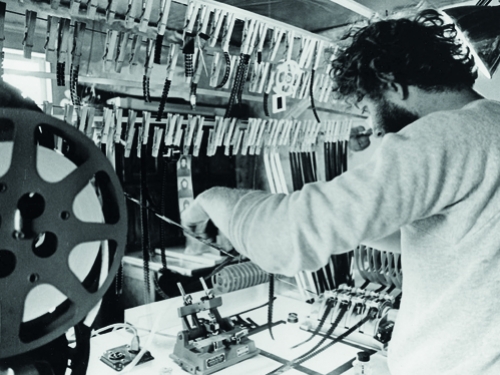Hollis Frampton
Hollis Frampton (1936–1984) was an American filmmaker, photographer, writer and artist. Frampton started making films in the early 1960s after moving to New York in 1958. He first experimented with still photography before turning to cinema, although he himself referred to this early period of filmmaking with irreverence. Frampton’s films and writing are considered an important part of structural film, a term proposed by P. Adams Sitney, denoting a style which favoured form over content and took to the basic elements of cinematic language rather than narrative content. Along with Michael Snow and Stan Brakhage, he is one of the major figures to emerge from New York’s avant-garde film community which centred around Jonas Mekas’s Film-makers Cooperative. Frampton often inspired his filmic structures on mathematical and scientific concepts. He gradually moved from making shorter work in the 1960s to much longer ones. The seven-part Hapax Legomena, which includes his most acclaimed work (nostalgia) (1971), took several years to make. He spent the last decade of his life working on Magellan, a 36-hour film meant to be seen at specific intervals over the course of 371 days, but was left unfinished at the time of his death. Frampton’s writings were collected in the book Circles of Confusion: Film, Photography, Video: Texts, 1968–1980 (1983).



